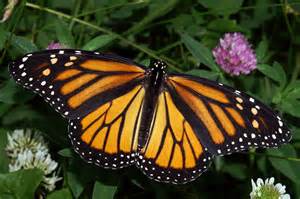
A week ago, I attended the Alpha Alpha State (Pennsylvania) Convention of The Delta Kappa Gamma (DKG) Society International. DKG is a professional honor society that promotes professional and personal growth of women educators and excellence in education. When the recently elected president was addressing the group, past officers came up behind her with a set of butterfly wings. I found this symbolism so appropriate for the change of roles (a move from first vice-president to president) and for the metamorphosis into the organization’s leader. Mention was made of how this person had served in various roles within the organization all of which helped her gain the knowledge and understanding of what it would take to be the president (likened to the butterfly’s caterpillar stage of change). The “burden” of leadership was mentioned, but just as the wings of a butterfly allow it to overcome any burdens and soar high, so will the wings of leadership allow the incoming president to surmount any burdens she may encounter in her office.
With those powerful analogies and beautiful imagery bouncing around in my creative mind, thoughts for this week’s topic took shape. We can learn a lot about life and about change from the butterfly and this week, I want to explore 10 lessons on change that the butterfly teaches us. 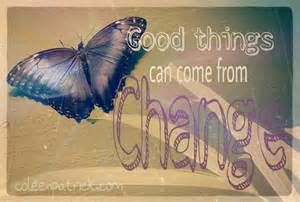
LESSON #1: EMBRACE CHANGE. To embrace change means we are accepting of it. The following quote from http://www.idanceintherain.com nicely sums up this thought: “Do not see acceptance as a weakness. Accepting a situation does not mean you are giving up. Acceptance simply means that you recognize and understand your current situation. Acceptance allows you to be free from the shackles of denial and move forward in life, creating a new path and a new life for yourself.”
Nothing is permanent; change happens all the time. Before change happens, remember that some things go and are replaced by new things. This is a fact of life. And, with some change, it is necessary for the old, the former to go so that the new can come. For a caterpillar to become a butterfly it must change. 
LESSON #2: ALL CHANGE BEGINS WITH AN ENDING. All change begins with some sort of loss. To get what one wants, one must give up what is. “It’s the end of the world,” said the caterpillar. “It’s the beginning of the world,” said the butterfly.
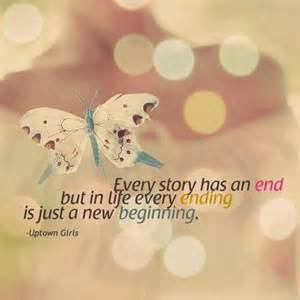
LESSON #3: LET GO OF THE PAST. In order to be able to fully let go and embrace what change brings, the acceptance of the loss, of the end of the current, is vital. You need to let go of the past in order to accept change and adjust to life, so that you can remain optimistic and create the future you want. Louise Smith says, “You can’t reach for anything new if your hands are full of yesterday’s junk.” We delight in the beauty of the butterfly, but rarely admit the changes it has gone through to achieve that beauty.( Maya Angelou) The caterpillar must be let go before the butterfly can become. 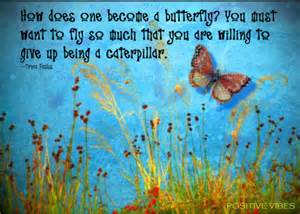
LESSON #4: WE MUST SPEND TIME IN THE “WILDERNESS;” THE NEUTRAL ZONE. In our lives, the wilderness or neutral zone comes after a change has occurred and we have ended something and let go. This is a place when the old and the new overlap. For the butterfly, this is the pupa stage of its transformation. This is where a larva encapsulates itself into a shell-like structure that hangs from a twig or branch. Inside the structure, the insect is rapidly changing; transforming. It is in the wilderness of the change process that we, too, begin our transformation into “something new.” It is here that new ideas, new discoveries, re-orientations, and creativity take center stage and help propel those undergoing the change toward something they might be able to accept; something that might make their life better.

LESSON #5: COME OUT OF THE COCOON. The cocoon is the comfort zone of the caterpillar. Just imagine if the caterpillar never emerged from this state of change? We would never have the beautiful butterfly. Yes, change can be frightening. Getting moved out of our comfort zone is unsettling. We feel safe and secure when ‘wrapped’ in the zone. But, you will never know what is possible or what you are capable of unless you leave the confines of what is comfortable and known. How can you move forward unless you are willing to open new doors and try new things. Indeed, you will never know what you are capable of doing; you may never reach your full potential unless you venture beyond the boundaries of your comfort zone.
The shift outside our comfort zone forces us to try new things. The shift outside our comfort zone gives us an opportunity to learn things about ourselves and to see ourselves in a different light. The shift outside our comfort zone gives us our “wings.” You can only fly once you are willing to give up the safety of your cocoon. And, like the butterfly, you have the strength and hope to believe that in time, you will emerge from your cocoon, transformed. 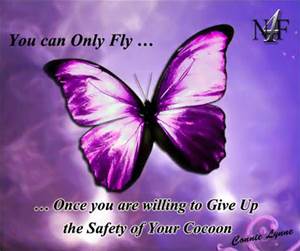
LESSON #6: TRUST THE FUTURE. Today a caterpillar; tomorrow a butterfly. Don’t lose hope because you never know what tomorrow will bring. Embrace the opportunity to pursue your vision, your dream, your goal! Sonia Ricotti’s thoughts sum up this thought nicely, “Just trust that everything is unfolding in the way it is supposed to. Don’t resist. Surrender to what is, let go of what was, and have faith in what will be. Great things are waiting for you around the corner.”

LESSON #7: UNFURL YOUR WINGS. Never underestimate that power that is, and has always been, within you. You need to be confident in yourself when dealing with change. The more confident you are, the more likely you are to deal positively with whatever change is facing you. And, the more confident you are, the stronger your sense of control and direction will be allowing you to approach anything change challenges you with.
You must believe in yourself. When you believe in yourself, you are more willing to be pro-active, to take action which is really needed when dealing with change and transition. No matter what change is bringing to you, if you move forth confidently keeping your dreams, your goals, and what you want front and center, you will invariably be successful. You can rise above any challenge change throws your way if you remember to remain confident in yourself! 
LESSON #8: DARE TO GET OFF THE GROUND. “Just when the caterpillar thought, ‘I am incapable of moving,’ it became a butterfly.” (Annette Thomas) When change and transition alter the course of your journey and a new route must be tried, there is a certain amount of risk involved when traveling down the unknown route. Instead of curling up in the safety of your comfort zone, be bold and step up the challenge. Remember, life begins at the end of your comfort zone. T.S. Eliot said, “Only those who will risk going too far can possibly find out how far one can go.”
We have all heard the proverb, “Nothing ventured; nothing gained.” In times of change and transition, if we want to ‘gain,’ to make progress in the new environment or situation, we must ‘venture.’ With that venture, we will sometimes have to take risks to move forth; to make progress. So, don’t regret the chance you didn’t take. Make things happen for you. Be brave. Take that first step. You may be surprised what you learn about yourself.

LESSON #9: RIDE THE BREEZES AND SAVOR THE FLOWERS. Butterflies seem to dance as they flutter along the breezes and among the flowers. Their “dance on the breeze” can be a reminder to us to approach things with joy; with enthusiasm. Enthusiasm is the fuel that sustains you when dealing with change. It is the fire that lights you up and keeps you moving forward in the face of difficulties. It lifts you up (just as the breezes lift a butterfly) when the situation looks dark, and it energizes you when you are tired. Being enthusiastic about what you are doing will increase your experience in a really good way. It increases your vitality. You will go about your life with energy and you’ll feel good about what you are doing, no matter what it is.
When we are enthusiastic, we are: more positive; more optimistic; less stressed; more excited about life. If we can maintain excitement and enthusiasm, we are able to better deal with whatever issue the change may be presenting. As Norman Vincent Peale said, “Enthusiasm releases the drive to carry you over obstacles and adds significance to all you do.” Enthusiasm is the fire that lights you up and keeps you moving forward in the face of difficulties. It lifts you up when the situation looks dark, and it energizes you when you are tired.
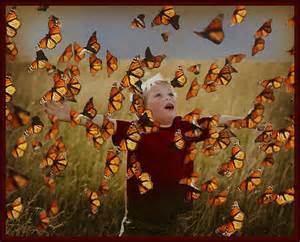
LESSON #10: PUT ON YOUR BRIGHTEST COLORS. “Butterflies bring color and joy with them.” (Trish Phillips) After a change, don’t hide yourself. Announce to the world that you are here and you are ready to face whatever the change has brought/is bringing. The brighter the colors on a butterfly, the more noticeable it is. Be the same.
Wearing your brightest colors might release your inner child – the part of us that takes us back to a time when: we were free spirits; our imaginations would run wild; we were creative beyond reason; our days were filled with laugher, fun, joy, and play; we were wildly happy about anything and everything; when cardboard boxes became houses, cars, airplanes or caves; curiosity drove a lot of what we did; we weren’t afraid to take a risk or make a mistake; we bounced back from any type of daily disruption; we lived in the moment.
Our inner child exudes unbridled joy, boundless energy, a free-spirited nature, a wild imagination, creativity, happiness, enthusiasm, resilience, stamina, laughter, fun, curiosity, a sense of wonder. Aren’t these characteristics that we want working for us as we deal with change? Leo F. Buscaglia wrote, “I am often accused of being childish. I prefer to interpret that as child-like. I still get wildly enthusiastic about little things. I tend to exaggerate and fantasize and embellish. I still listen to instinctual urges. I play with leaves. I skip down the street and run against the wind. I never water my garden without soaking myself. It has been after such times of joy that I have achieved my greatest creativity and produced my best work.” 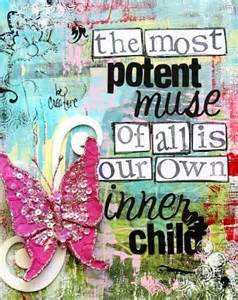
If nothing ever changed, there’d be no butterflies. And so it is with us. If nothing ever changed with us, we’d remain “caterpillars” all our lives. This is not how life is meant to be lived. Change is inevitable, so just like the beautiful butterfly, let’s channel that change for the better. We need to continually grow and evolve. Just as the butterfly goes through a metamorphosis, so must we. Simona Rich writes, “Imagine the grand metamorphosis of the butterfly. Let’s relate the stages of this experience to the various aspects of our lives: first the tiny egg of potential, then the tireless caterpillar working toward that potential, then the chrysalis allowing that potential to take shape, and finally the butterfly who realizes that potential and takes flight.”
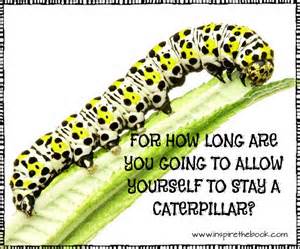
The butterfly is a wonderful symbol for change, transition, adaptation, and metamorphosis. When you see one, may it remind you of these 10 lessons on change that we can learn from this magnificent creature.






